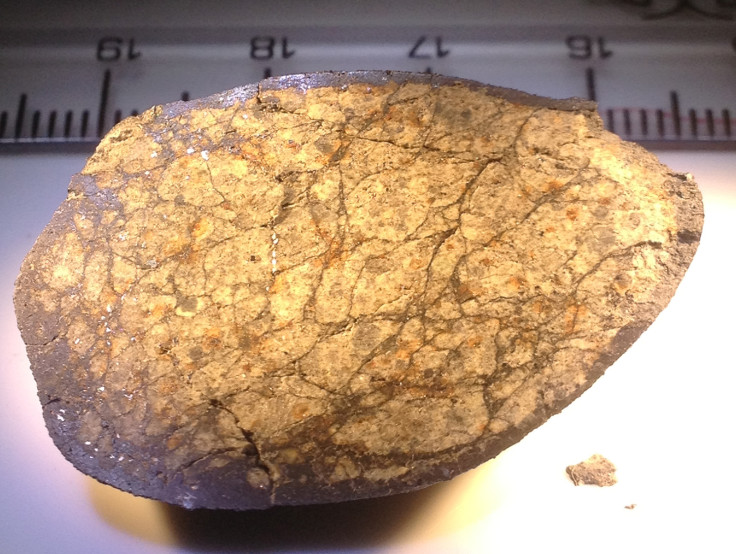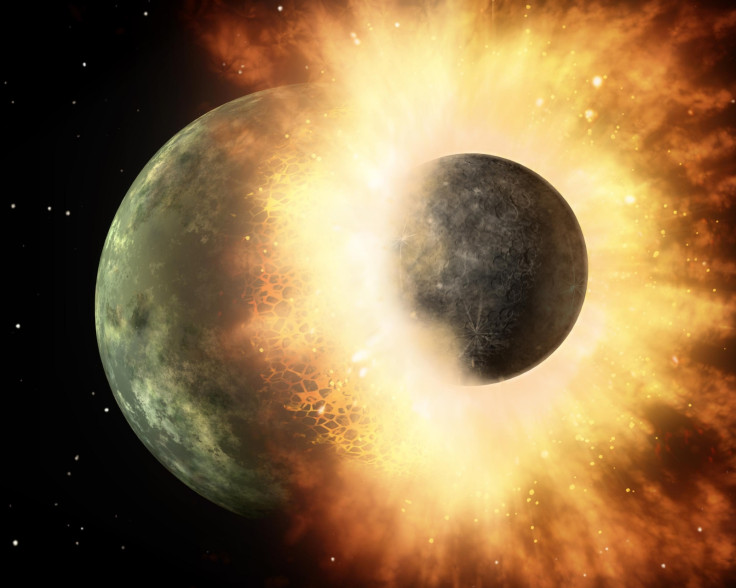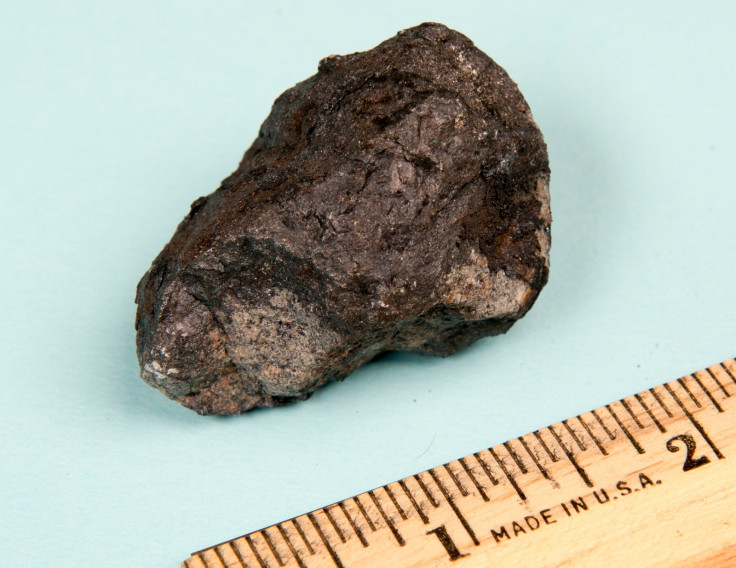Meteorites from moon-forming planet collision 'could provide Holy Grail of primordial Earth'

Stony meteorites could hold secrets about our primordial planet, giving an insight into Earth's history before it collided with another huge object to form the moon.
Using data analysis and numerical modelling, scientists have been able to find a record of the giant collision to estimate the moon's age to 4.47 billion years – in line with previous estimates. However, their findings also have wider implications for traces of this event still being present in meteorites.
Bill Bottke, from the Southwest Research Institute in Texas, told IBTimes UK they were initially looking to rule out some of the lunar ages that have been suggested by scientists. In the process, though, they found they had come across a "completely alternative" way of getting at the age.
The team said that ejected fragments from the collision would have travelled outwards to the asteroid belt and hit other asteroids at extremely fast speeds, which would have produced highly heated material – providing a signature of the event.
Published in the journal Science, they designed computer simulations to model the evolution of these asteroids and fitted the results into ancient impact heating signatures in stony meteorites. Bottke said normally asteroids will hit one another at about 5km/s. The asteroids from the impact, though, would be travelling far faster, which would cause a heating event that would leave these deformities in the rock.

Research indicated numerous kilometre-sized fragments from the giant impact struck the main belt asteroids leaving behind a permanent record. After this, the team set about working out the timing and magnitude of the bombardment.
By modelling the evolution of giant impact debris and fitting the results into ancient impact heat signatures of stony meteorites, they inferred the moon's age to be 4.47 million years.
The authors said the implications of their findings could be that tiny remnants of the giant impact could still be find within meteorites that show signs of shock heating – this would allow them to probe the nature of primordial Earth.
Bottke said: "When a bomb goes off it causes collateral damage then what happens the investigators go in and try to study all the damage to try to understand how the explosion took place. But they're also looking for traces of explosive apparatus to find out what happened. To some degree that's what we're talking about here.
"You have a giant impact in the solar system that produces all these fragments that are sent along to create these crater events in the asteroid belt. It's likely that some trace remnant of these projectiles might still be found.

"Now mostly when projectiles hit a surface at a very high velocity, they are pulverised, but sometimes chemical traces can be left behind and sometimes, if we're really lucky, fragments can be left behind. There is a possibility that maybe at some level some small fragments from proto-Earth or from the impactor that hit the earth. But I don't think anyone has actually looked."
He said the easiest way to find traces of the impact would be to look within the existing meteor collection – as if there are heating events that can be traced back to around 4.47 billion years, an argument could be made they come from this event.
Bottke said: "This is why this is exciting. If you think about it, this is something we don't know. The oldest rocks we have on Earth only go back about four billion years. We think the moon forming event was 4.5 billion years. So we're missing about 500 million years of the earliest Earth's history and we have no idea what the starting material was for the earth was like.
"People take exiting material but they can never find a really good match. Finding this would answer questions about what earth was like before this took place. And if we know that, can we say something about all the processes that took place to turn it into the planet we know today.
"It's something of the Holy Grail. There are geologists out there now probing for the oldest rocks. Really what you want to get at is the oldest stuff on the Earth. The places to look are the oldest things in the solar system – the moon and asteroids – and we have samples of both."
© Copyright IBTimes 2025. All rights reserved.






















